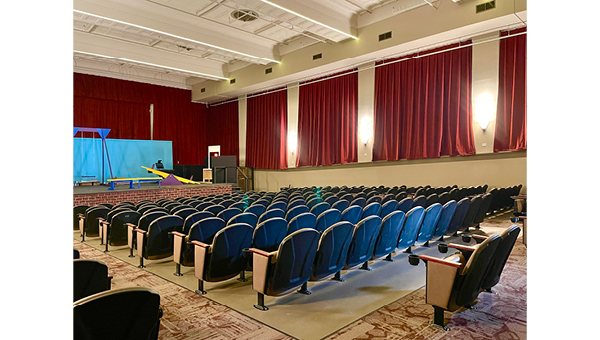Daylight saving time is back this weekend
Published 9:28 am Wednesday, March 7, 2018
We’re just days away from the return to daylight saving time. The time to change the clocks is this weekend, when Saturday night we will advance the hands on the clock by one hour.
Most people welcome the shift in March as a signal of spring. Others like the coordinated availability of daylight after work. The semiannual ritual shifts our rhythms and temporarily makes us groggy at times when we normally feel alert. Moreover, many Americans are confused about why we spring forward in March and fall back in November, and whether it is worth the trouble.
Without question, it’s a hassle. There are the clocks to change on our stoves, by our bedsides, in our cars, on walls, in classrooms, offices, and elsewhere. Not to mention the ever-challenging digital watches.
The practice of resetting clocks is not designed for farmers. Their work goes on despite what time the clock says it is. And it does not create extra daylight — it simply shifts when the sun rises and sets relative to society’s regular schedule and routines.
Most people still have to be at work at a set time, say 7 a.m., and if that time comes an hour earlier, they simply get up an hour earlier.
The more pressing issue is the safety one, concerning kids getting on school buses on dark mornings. Without standard time, the winter-time morning buses would be arriving in even darker hours, not a good thing for kids.
So, while changing the clock twice a year is a pain, it’s what most of the nation still manages.
Daylight saving time has been around for decades, with the goal of making the best use of daylight and conserving energy.
Founding father Ben Franklin was the first to develop the concept when he penned the essay, “An Economical Project for Diminishing the Cost of Light,” suggesting that people will save money on candle wax when they get up earlier, LiveScience reports.
Although he lived well before the invention of light bulbs, Franklin observed that people who slept past sunrise wasted more candles later in the evening. He also whimsically suggested the first policy fixes to encourage energy conservation: firing cannons at dawn as public alarm clocks, and fining homeowners who put up window shutters.
But the idea didn’t take off until 1907 when William Willett introduced “British Summer Time,” also known as daylight saving time, National Geographic reported. Like Franklin’s idea, Willett’s was focused on adding more morning hours during daylight.
Willett’s idea to set the clock backwards was first implemented by the German government in 1907, during World War I, as a way to conserve energy by using less coal, National Geographic reported. Eventually, England, the U.S. and several other countries fighting the Germans implemented daylight saving time.
Infrequent uses of daylight saving time occurred during World Wars I and II as part of efforts to save fuel. President Franklin D. Roosevelt referred to it as “War Time” during World War II.
In 1966, Congress formally set one pattern for daylight saving time — under the Uniform Time Act of 1966. President Lyndon Johnson set daylight saving time to begin the last Sunday of April and to end the last Sunday of October.
Although economists say changing the time does little to conserve energy, daylight saving time provides more hours for afternoon recreation.
The strongest arguments for daylight saving time, with the exception of energy costs, support not only doing away with the switches but keeping the nation on daylight saving time year-round. This provides the benefits of after-work sun without the schedule disruptions.
Yet humans adapt. If we abandon the twice-yearly switch, we may eventually slide back into old routines and habits of sleeping in during daylight. Daylight saving time is the coordinated alarm to wake us up a bit earlier in the summer and get us out of work with more sunshine.





